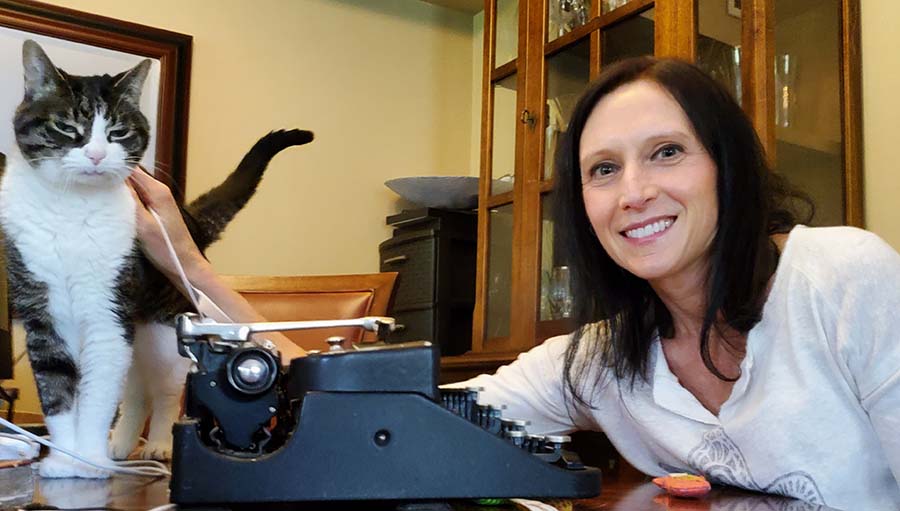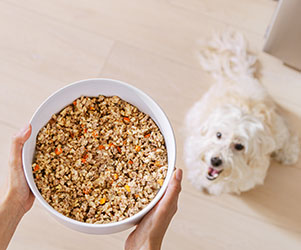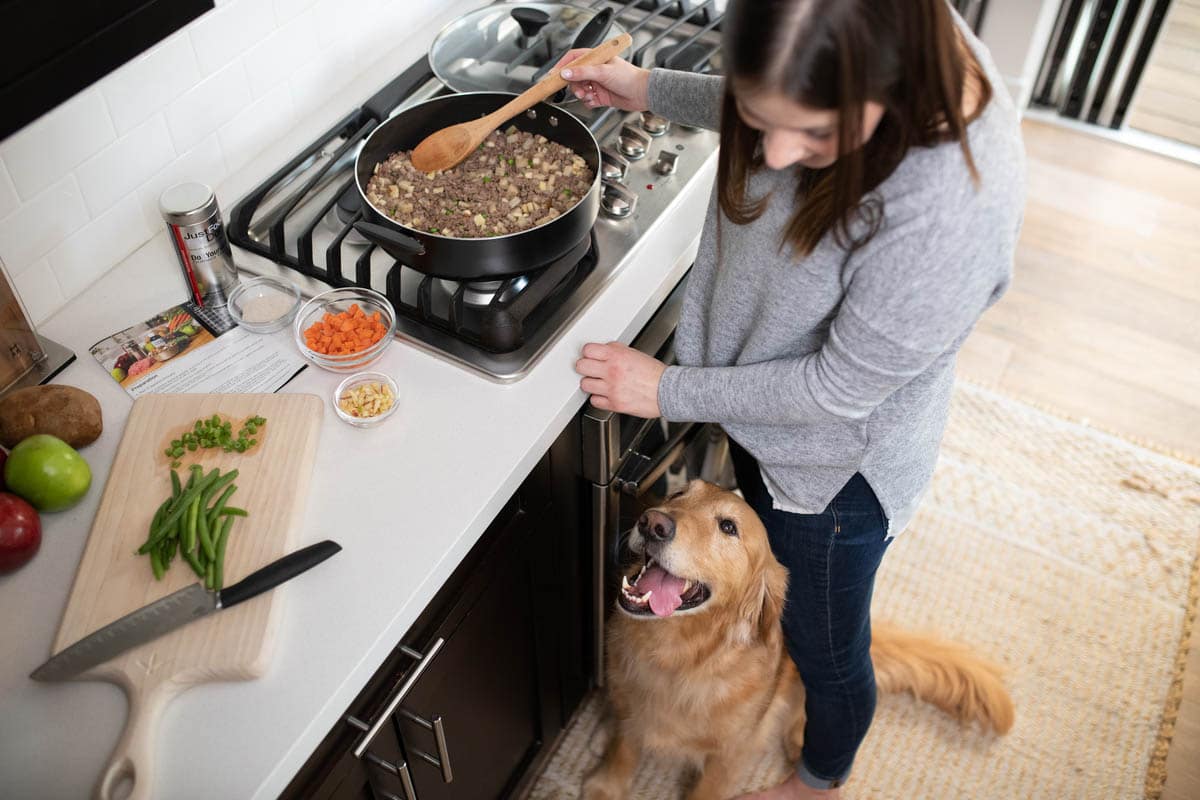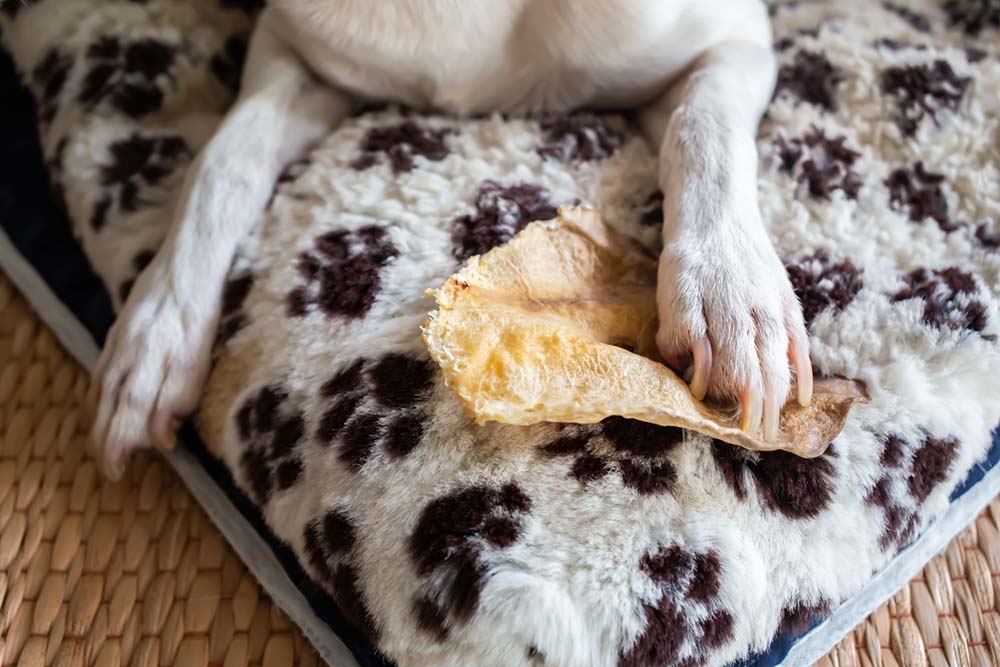Is the Green Bean Diet for Dogs Safe?
Dr. Alonge digs into what the green bean diet is, if it can help your dog, and what every pet parent should know before making changes to their dog's food.
Pet obesity is a significant problem that can have a serious effect on your pet’s health. Dogs often gain weight as they age or become less active. If your dog is carrying a few extra pounds, you may want to try the green bean diet to help them slim down.
It sounds great—simply add green beans to your dog’s meals and watch the weight fall off. But does it really work? Is it safe? Here, we’ll dig into what the green bean diet is, if it can help your dog, and what every pet parent should know before making changes to their pup’s dog food.
What is the green bean diet?

The green bean diet is a weight loss plan for dogs that’s gotten a lot of buzz from pet parents in recent years. The idea is pretty simple: Replace a portion of your pet’s regular dog food with green beans. Fiber-rich green beans will help them feel full while eating fewer calories.
Initially, pet owners replace 10% of their dog’s regular canned or dry food with canned green beans with no added salt or seasonings. Every two to three days, the amount of green beans is increased by another 10% until the dog’s meal consists of 50% regular food and 50% green beans.
This fifty-fifty mix is maintained until your pup reaches a healthy weight. At that point, the whole green beans are slowly phased out, eventually returning to a full portion of regular food.
Is the green bean diet effective for weight loss in dogs?
The short answer is yes—the diet can be effective if done correctly and under veterinary guidance.
Studies in humans, cats, and dogs have shown that adding fiber to a low-calorie diet can lead to positive weight-loss results. That’s where green beans can help.
Canned green beans and raw green beans with no added salt or seasonings have many health benefits for dogs and are low in calories. At only about 50 calories per can, green beans have a high fiber content, which helps dogs feel full. In addition, most dogs enjoy the taste, which makes it an easy swap for their regular food.
Here’s how it works:
- As your dog eats fiber-rich green beans, their stomach and intestines stretch.
- This stretching causes the release of certain hormones into their bloodstream.
- These hormones travel to your pup’s brain and trigger the signal to stop eating.
High fiber content helps increase the meal volume without adding many calories, so your dog feels full faster.
What are the risks of the green bean diet?
While the green bean diet may seem like a simple and healthy way to help your dog shed a few extra pounds, there are important risks to consider before placing your pup on this plan, especially without guidance from a doctor of veterinary medicine (DVM).
Potential concerns with the diet include:
- Drastic calorie cuts — Some versions of the diet reduce a dog’s total calorie intake by as much as 50%. Extreme calorie restriction can be risky, especially if your dog has an underlying medical condition such as liver disease, kidney issues, heart disease, diabetes, or hypothyroidism. Without a veterinary exam and lab work, a sudden drop in calories could lead to serious pet health issues.
- Nutrient deficiencies — Regular adult dog food is formulated for dogs eating a standard number of calories. If you drastically cut calories by swapping food for green beans, you also cut essential nutrients such as amino acids, healthy fats, vitamins, and minerals. This can lead to malnutrition, especially if the diet is prolonged.
- Lack of protein — Overweight dogs need more protein, not less, to lose weight. Additional protein helps preserve muscle mass while the pup loses fat. The green bean diet doesn’t provide that added support, and your dog could lose muscle instead of fat.
- Improper nutrient absorption — While fiber can help your dog feel full, too much fiber, especially from whole green beans, may interfere with the absorption of key nutrients, such as calcium, zinc, iron, and essential fats, leading to nutritional imbalances. A sudden increase in your dog’s fiber content can also cause gastrointestinal issues such as diarrhea.
- Slower weight loss progress — As your dog loses weight, their metabolism adjusts. This means they will need fewer and fewer calories to keep losing. A dramatic calorie cut early on may work at first, but their progress may stall. In addition, once your dog is weaned off the green bean diet, they may quickly gain back the weight.
What are safe weight-loss alternatives for dogs?
After learning about the risks of feeding green beans, you may decide that it’s not the best fit. The good news is that there are many safe, veterinary-approved weight management methods to help your dog lose weight. The key is to go slow, stay consistent, and work with your DVM to ensure your dog remains healthy.
Safe weight loss strategies include:
- Switching to a veterinary weight-loss diet — Specially formulated prescription weight-management dog foods are packed with the right amount of nutrients but fewer calories. These diets are high in fiber and protein to help your dog feel full and maintain muscle mass.
- Using proper portion sizes — Many pet parents accidentally overfeed their pups, which can lead to obesity or overweight dogs. Ask your vet how much your dog should be eating for their ideal weight—not their current weight—and measure meal portions accurately using a standard measuring cup or, even better, a kitchen scale.
- Using veggies as treats — Instead of substituting a large portion of your dog’s food for green beans, use these low-calorie veggies and others, such as carrots, zucchini, and cucumbers, as a crunchy, satisfying, low-calorie treat.
- Exercising your dog daily — Your dog needs regular physical activity to stay healthy. Add short walks and games of fetch to their daily routine. If your dog is out of shape, start slow and gradually increase their activity level.
- Using slow feeders — Preventing your furry friend from eating too fast can help them feel full and keep them mentally engaged. Food puzzles are a great way to feed meals and offer healthy dog treats while making your pup work for their reward.
- Avoiding high-calorie treats and table scraps — Treats should constitute no more than 10% of your pup’s daily calories. Opt for healthy treats/low-calorie options and avoid feeding people food.
What are common mistakes pet parents make with weight loss diets?
Helping your dog lose weight is a great goal, but pet parents sometimes make mistakes that slow progress or put their dog’s health at risk. Here are some common missteps pet owners make and how to avoid them:
- Not consulting with a DVM — Before switching your furry friend’s food or reducing their portion size, talk to your veterinarian. They can create a safe, effective plan tailored to your dog’s age, breed, pet health, and ideal weight.
- Cutting calories too drastically — Dogs need time to adjust to a different diet. Losing weight too quickly can lead to muscle loss or other serious pet health problems. Aim for slow, steady weight loss under your vet’s guidance.
- Ignoring dog treat calories — A few extra treats can stall your dog’s weight loss progress. Those bites of cheese or dog cookies quickly add up. Ensure you account for dog treat calories in your furry friend’s total daily caloric intake. Swap out high-calorie snacks for healthier options such as veggies.
- Failing to track progress — Weigh your dog regularly to track their progress. If the weight isn’t coming off—or coming off too fast—you may need to adjust your plan. Check in with your vet every few weeks to ensure your dog stays on track.
With the right approach, you can help your dog lose weight safely and feel their best. Whether you’re exploring the green bean diet or another method, it is important to focus on safe, steady progress and work closely with your veterinarian.
This content is for informational use only and does not replace professional nutrition and/or medical advice, diagnosis, or treatment. It is not a substitute for and should not be relied upon for specific nutrition and/or medical recommendations. Please talk with your veterinarian about any questions or concerns.
Citations
Kelly, Rebecca K, Janet Calhoun, Amy Hanus, Pamela Payne-Foster, Ron Stout, and Bruce W Sherman. 2023. “Increased Dietary Fiber Is Associated with Weight Loss among Full Plate Living Program Participants.” Frontiers in Nutrition 10 (April). https://doi.org/10.3389/fnut.2023.1110748.
Pallotto, Marissa R., Maria R. C. de Godoy, Hannah D. Holscher, Preston R. Buff, and Kelly S. Swanson. 2018. “Effects of Weight Loss with a Moderate-Protein, High-Fiber Diet on Body Composition, Voluntary Physical Activity, and Fecal Microbiota of Obese Cats.” American Journal of Veterinary Research 79 (2): 181–90. https://doi.org/10.2460/ajvr.79.2.181.
Butterwick, Richard F., and Amanda J. Hawthorne. 1998. “Advances in Dietary Management of Obesity in Dogs and Cats.” The Journal of Nutrition 128 (12): 2771S2775S. https://doi.org/10.1093/jn/128.12.2771s.









